Palestine and the Olive Tree
Olive picking, painted by Damin Abdullah
During the ongoing occupation, erasure of Palestinian history has been one of the most persistent forms of Zionist colonial violence. As a result of this attempted erasure, Palestinians have relied on symbolic articulations of nationhood to communicate their historic connection to the land of Palestine. The most prominent of these symbols has been the olive tree, symbolising both their rootedness in the land, as well as their resistance against all forms of colonialism which aim to diminish their claim to it.
Given its importance, it is no wonder why this symbol of resistance has been under constant attack by the regime as in essence, its cultural and economic significance directly attacks the colonial workings of the Zionist regime, which has sought to divide, disunite and weaken the Palestinian population. It’s very existence reinforces their claim to the land, which in turn attacks the Zionist narrative that is built on erasure, making the symbol alone an enemy of the colonial entity. This article will uncover some reasons as to why it has been made a target of attacks by the colonial regime, and what these have looked like in recent history.
Symbolic significance:
Under colonial strategies of fragmentation which divide the colonised society, cultural symbols can play an important role in unifying the colonised under one emblematic sense of nationhood. In the case of Palestine, the Zionist regime has built its colonial structure off of fragmentation policies, which actively seek to prevent the collectivisation of the Palestinian experience. This method has taken many different forms throughout the history of colonial occupation; Palestinians are isolated in restricted areas, some are imprisoned, and others are expelled from the land entirely, losing their physical connection to their homeland.
These policies are enacted to weaken the Palestinian experience, and thus their ability to oppose the colonial structure as a powerful, united entity. In this context, cultural symbols allow Palestinians to unite under one sense of belonging and heritage, reviving the cultural memory of their historic claim to the land under increasing attempts aimed towards erasing it. These symbols contribute to the national consciousness of people living in divided societies, where there are limited means of expression.
The olive tree is an example of a symbol that rekindled this cultural memory at a time when the regime's fragmentation policies were in full force. Olive trees hold a lot of historical significance, as they date back to 8,000 BC, which Palestinians draw connections to to amplify their traditions and ancient presence in Palestine. [1]. Nasser Abufarha suggests that the olive tree gained its symbolic significance once the Liberation movement was crushed in the 80s, when the exiled Palestinian populations in Lebanon lost their strategic position in the struggle for Palestine, as they were pushed into further exile in Tunis and Yemen [2]. The struggle then shifted primarily onto those in the West Bank and Gaza, where the olive tree was already taking hold as a symbol of resistance and rootedness in the land.
Economic security
In addition to its symbolic significance, the olive tree provides Palestinian’s with economic security in the occupied Palestinian territories (oPt). In 2009, it was recorded that around 45% of land in the oPt was planted with olive trees [3], while the olive oil industry more generally provides ¼ of the gross agricultural income in the oPt, supporting the livelihood of approximately 100,000 families. [4]
In this way, it could be said that the olive trees’ economic significance contributes to its symbolic significance, as any acts surrounding it including the planting, harvesting and general tending to the olive tree, become politically charged acts, aimed at safeguarding the oPt’s prosperity against the colonial occupation's disruption.
Understanding the economic and cultural significance of the olive tree provides a useful backdrop to grasping the motivation behind the regime's frequent attacks, and why they have increased significantly in recent years.
Colonial sabotage and exploitation
1. Uprooting trees
The regime has employed multiple methods of disrupting the prosperity that the olive tree provides Palestinians, attacking it as both an economic resource, and a symbol of resistance. A mass uprooting of trees occurred in 2002, in order to create space for the construction of the Separation Barrier [5], a key tool for the continuation of colonial apartheid.
The uprooting of olive trees for the expansion of Zufin, a Jewish settlement // image: Braverman article
This move was justified by a need to promote national security. To quell the outrage caused by the uprooting, it was promised that these trees would be relocated and replanted in new locations once consent was provided by the owner. This however, proved futile, as most Palestinians have no access to any other land, and have instead been witness to the regime replanting the olive trees on ‘Israeli’ land [6]. Here, a key articulation of Palestinian identity, nationhood and livelihood is not only stripped from the owner, but appropriated by the regime under the guise of national security.
2. Settler attacks on the olive groves
This violence extends far beyond the state, through the IOF and settlers who frequently pillage and vandalise the olive groves, especially during harvest season. Together, they have destroyed more than 165,000 olive trees, which has led to an economic loss amounting to $50,849,265 [7].
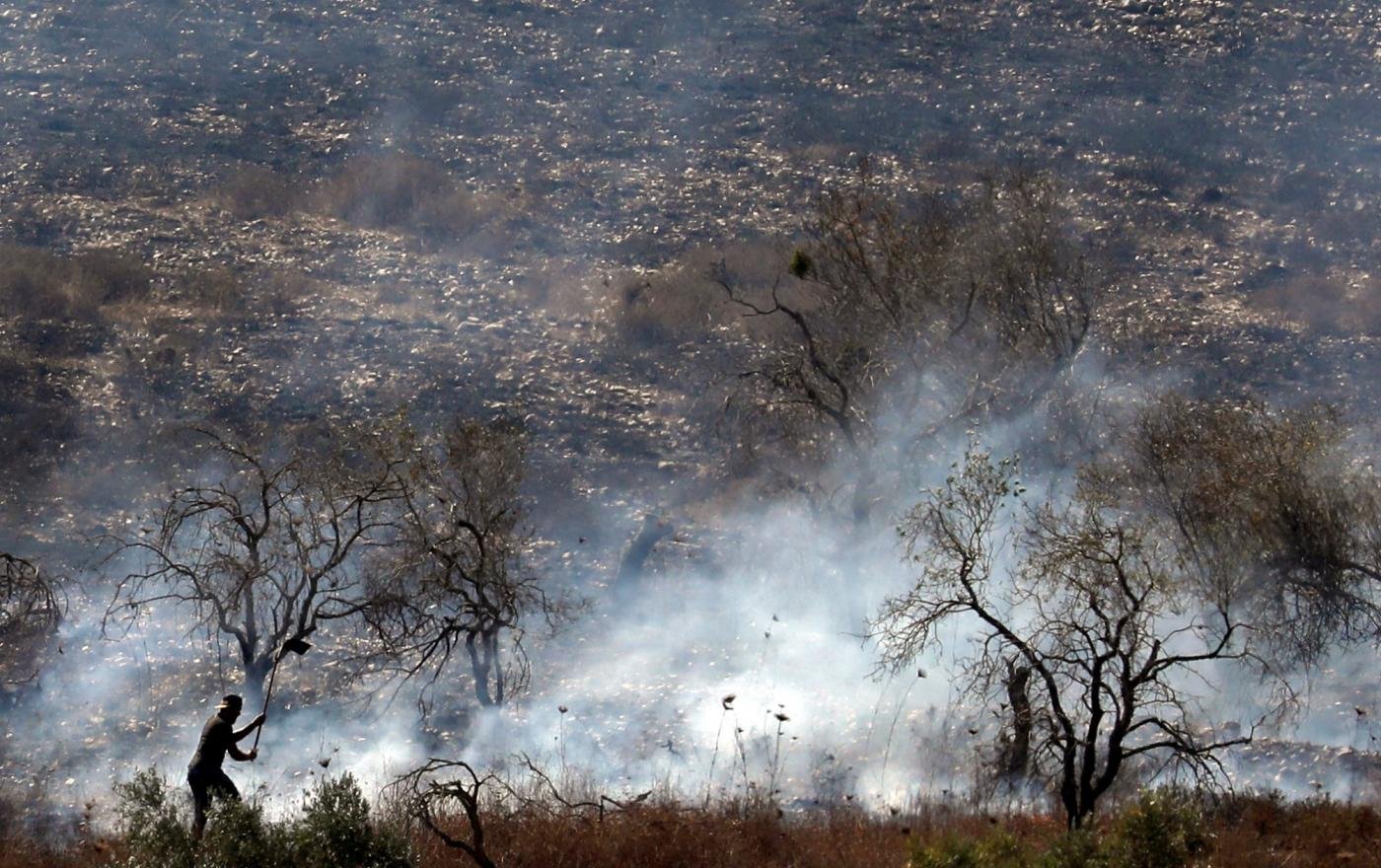
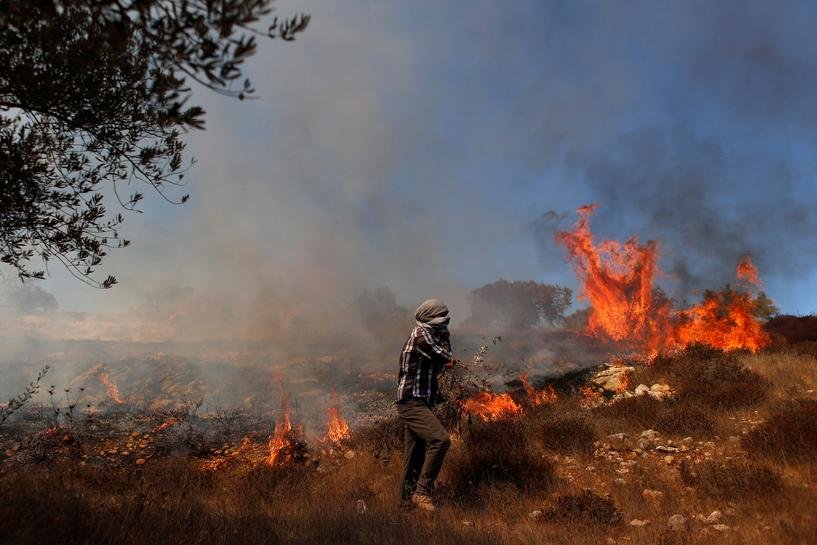
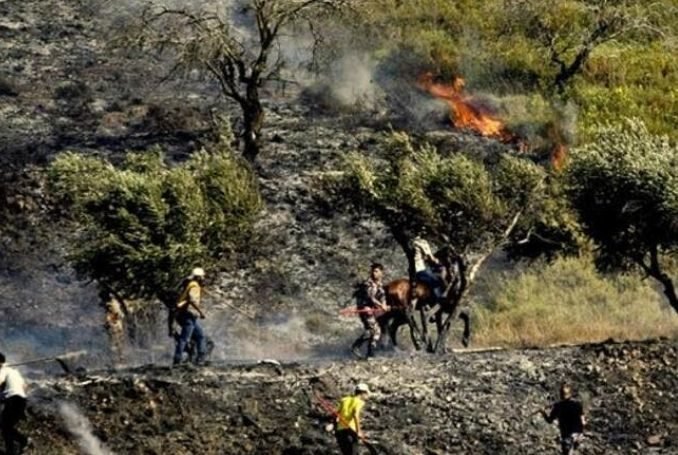
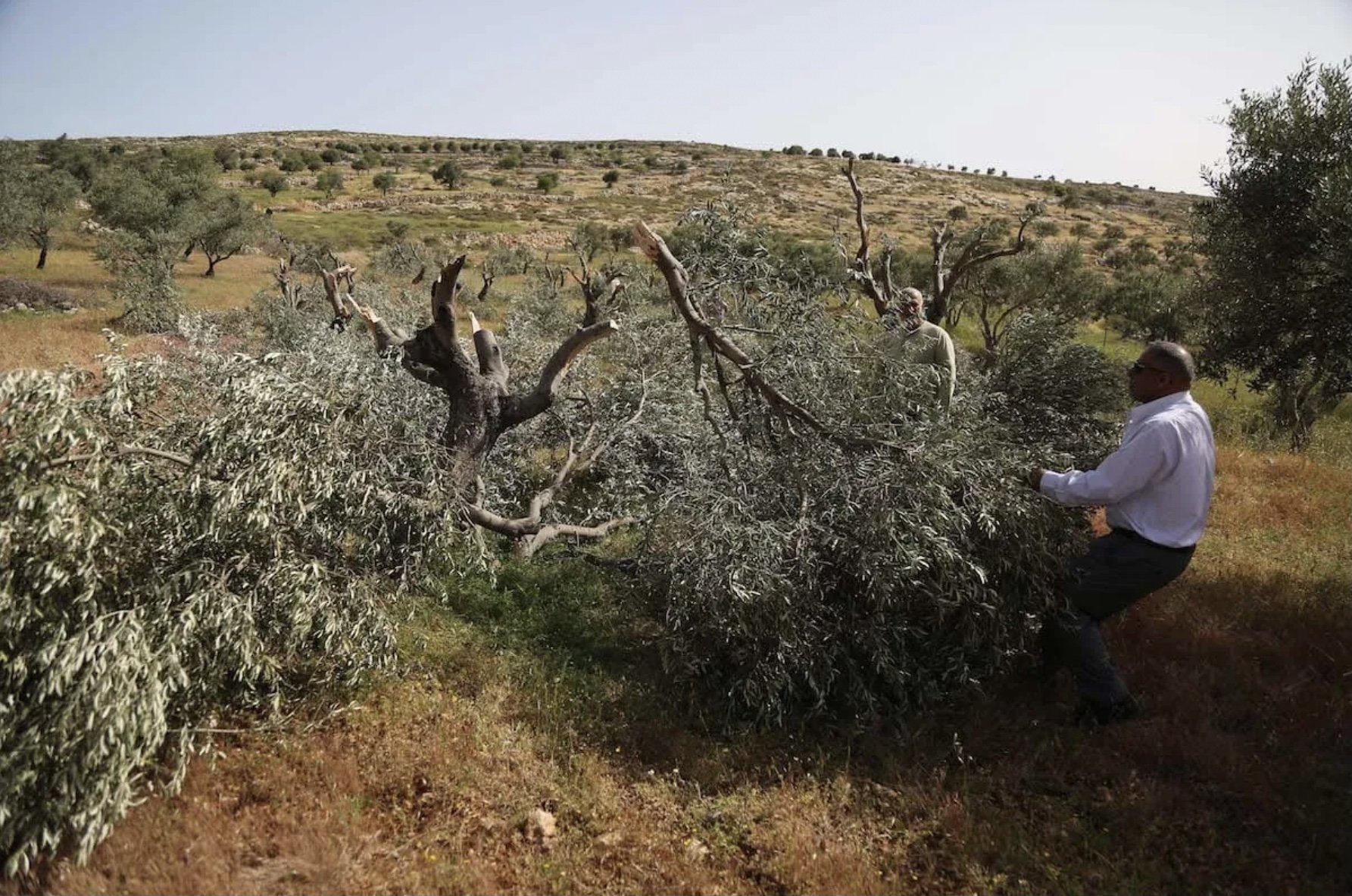
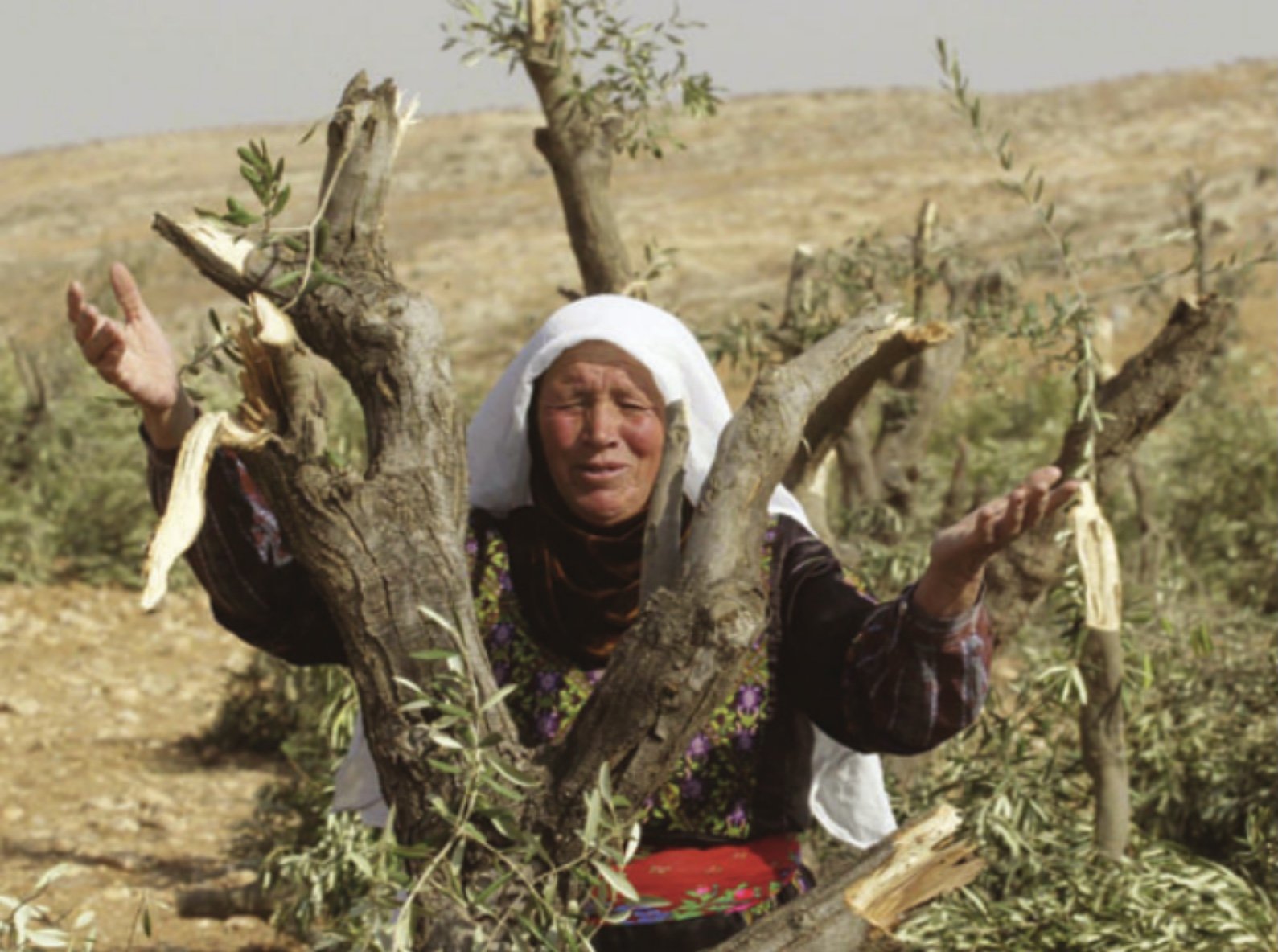
As recently as last Thursday, 9th December 2021, settlers from the illegal settlement of Mitzpe Yair, backed by IOF forces, chopped down 70 olive trees in the village of Masafer Yatta and led a herd of sheep onto a Palestinian farmers land to destroy its crops, leading to confrontations [8]. It’s been suggested that since the harvest season began on the 4th of October, this year alone 3,000 olive trees have either been damaged or had their harvest stolen [9].
3. Restrictions on social mobility: the permit and timetable system
Colonial sabotage and exploitation has taken on more discrete forms, such as through the permit and timetable system which was put in place for “olive protection,” but in reality has expanded the reach of colonial surveillance and restrictions on social mobility.
Both systems severely limited the economic prosperity for Palestinians in oPt, as they limit Palestinian access to land. At least 40,000 dunums of olive trees were declared military zones, forcing Palestinians to obtain permits that would give them access to their fields for a limited number of days [10].
In Samara, protection is only offered when military timetables are complied with, alienating “Palestinians from local time” by only allowing harvesters access to fields between specific dates that do not account for the time it takes to harvest [11].
Considering that colonised societies more generally are heavily reliant on agriculture as their main economic sector, the effects of Zionist domination have been severe; as stated by the PLO’s National Affairs Department, these expanding spatial restrictions have “provoked a sharp decrease in the agriculture sector's contribution to GDP in the occupied Palestinian territory, from 36% in 1970 to 9.5% in 2000. In 2019, it was less than 3%.” [12].
Here, under the guise of protection, the regime has expanded the reach of its surveillance apparatus, which constricts Palestinians’ sense of time and autonomy over their own land.
Conclusion:
Under the context of fragmentation policies which have sought to fragment and weaken the collective strength of the Palestinian experience, the olive tree acted as a uniting force which symbolically drew all Palestinians together under the same struggle, despite forceful attempts to divide them, which further inspired their narratives of resistance. Economically, the olive tree has brought with it an industry that has sustained the livelihoods of many in the oPt. This cultural and economic importance is only heightened by Zionist attacks, as this alone has given the olive tree another layer of symbolic meaning; under the context of colonial violence, everyday acts of planting, tending and harvesting the olive tree have become in essence, acts of resistance.
These examples of violence against the olive tree on both a societal and state level have highlighted a characteristic theme of the Zionist regime; there is no ‘national security’ or ‘Israeli’ state that does not involve the deliberate plundering of Palestinian resources, economy and culture. Their own colonial policies, including those undertaken to promote national security and so-called “olive protection,” prove that the two cannot find peace in co-existence; there can be no Zionist state alongside a Palestinian state, when the former necessitates full control of, and impediment to, the latter’s ability to not only flourish, but to simply exist.
The olive tree has provided Palestinians with a narrative of both heritage and resistance. It demands that attention be given to the Palestinian right to exist independent of their colonial occupiers, making it on its own a powerful symbol in opposition to the regime.
Sources Used:
[1] Land of symbols: cactus, poppies, orange, and the olive trees in Palestine, Nasser Abufarha, p.353
[2] Ibid, p.352
[3] Uprooting identities: The Regulation of Olive Trees in the Occupied West Bank, Irus Braverman, p.240
[4] Olive Harvest Fast Facts, The Question of Palestine, OCHA
[5] Braverman, p.240
[6] Ibid, p.249
[7] Israel's Hegemony Explained: The Case of Palestine’s Olive Harvest Season, PLO Negotiations Affairs Department (NAD)
[8] ‘Israeli settlers chop down 70 olive trees, let loose sheep to destroy Palestinian farm,’ Middle East Monitor
[9] Ibid
[10] NAD
[11] Braverman, p.257
[12] NAD

